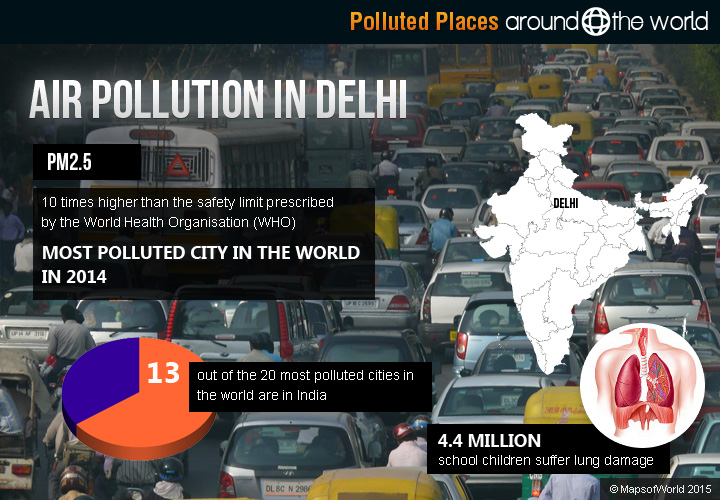8 Facts About Pollution In India That Will Leave You Gasping For Breath
8 Facts About Pollution In India That Will Leave You Gasping For Breath
1. Children Suffer The Most
Almost 44% of schoolchildren in Delhi had reduced lung function compared to 25.7% in the other cities studied. Delhi kids were also 1.8 times more likely to suffer from upper respiratory symptoms.
2. Pollution Is Responsible For Premature Deaths
In India, 627,000 premature deaths are attributable to ambient, or outdoor PM 2.5 exposure. When a household or indoor pollution is added to this figure it rises to 1.6 million.

3. Air Quality Was Healthy Only 7/730 Days Between 2013-2015
One study found that over a 730 day period between 2013 and 2015 the Indian capital’s air met ‘healthy’ standards for the participate matter on only 7 days. Beijing’s air made the grade 58 times during the same period.
4. We Are Home To 22/50 Most Polluted Cities Globally.
India has the dubious distinction of being home to 22 of the 50 most polluted cities globally. Instead of focusing on individual cities, the policy must take into account airsheds as a whole. No solution can be found to Delhi’s dirty air without addressing pollution in the neighbouring states of Punjab, Haryana, Uttar Pradesh and Uttarakhand.

5. Our Air Is Polluted With The Tiniest Particles You Can Imagine
Noxious gases of various types, collections of molecules that are tinier than the smallest particulates (only 2-3 atoms wide), are the other component of the air pollution mix.
6. Delhi’s PM Levels Are Linked To 6 Million Asthma Attacks Per Year In Delhi
PM refers to particulate matter, which is designated as either 10 or 2.5. These numbers refer to the size of the particles. PM 2.5 was linked to between 7,350 and 16,200 premature deaths (and a staggering 6 million asthma attacks per year) in just the city of Delhi.

7. Pollution is also affected by seasonal variations.
As any resident in north India can attest, the ‘pollution season’ coincides with winter. When temperatures drop, an ‘inversion’ occurs whereby a dense band of cold air gets trapped under a layer of warm air. The warm layer acts much like a lid, trapping pollutants near the ground. The worst air of all occurs in Delhi during the lead up to the festival of Diwali, which is celebrated in either October or November. Particulate matter tends to double from the already foul levels.
8. Household Air Pollution Is A Public Health Emergency That Many Cannot Mitigate
The poor cannot afford mitigating action. Moreover, a substantial percentage of the ambient PM 2.5 concentrations in India (up to 30% according to some studies) is sourced to household pollution that escapes outdoors from dwellings.
Good work
ReplyDeleteMohit daaa kidda
ReplyDelete